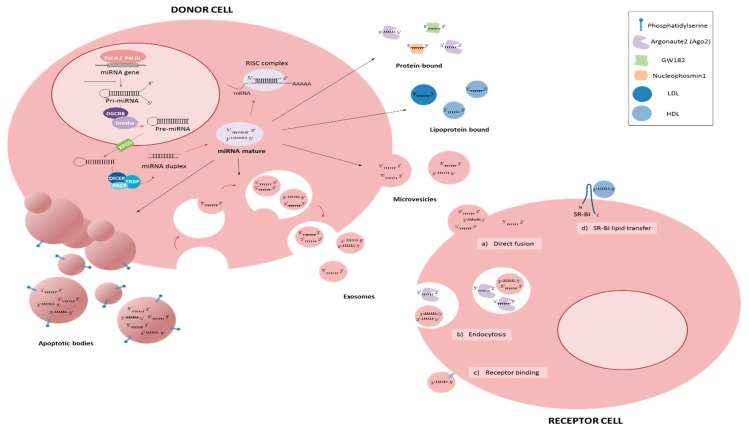Figure 1.
The release of microRNAs (miRNAs) in the extracellular environment. MiRNAs could enter the RNA induced silencing complex (RISC) to regulate mRNA expression and/or translation or can be released outside cell to reach biological fluids. Circulating miRNAs could be found in two major forms, vesicle associated and non-vesicle associated. When miRNAs are released by donor cells through vesicles, these could be microvesicles by outward budding (100–1000 nm), exosomes (50–100 nm) or apoptotic bodies as a result of apoptosis (1–5 μm). On the other hand, cell-free miRNAs could be found bound to proteins, such as Argonaute2 (AGO2), GW182 and Nucleophosmin1 (NPM1), or bound to lipoproteins, high-density lipoproteins (HDLs) or low-density lipoproteins (LDLs) [8]. Circulating miRNAs uptake by receptor cells occurred by membrane direct fusion (a), endocytosis (b) and receptor binding (c), which could trigger a downstream cascade or could produce internalization of the vesicle [9,10]. Moreover, it has been demonstrated that delivery of HDL miRNAs is dependent on scavenger receptor class B type I (SR-BI) [11,12].

